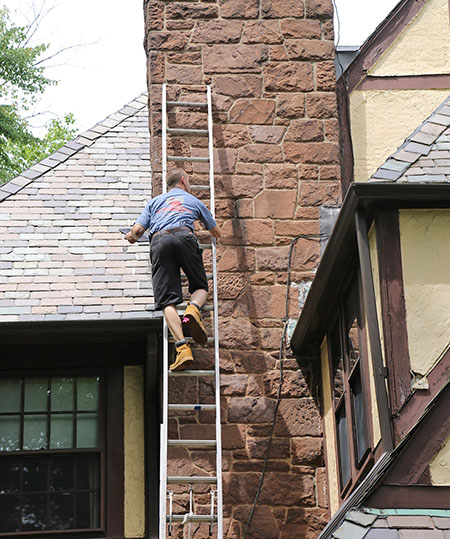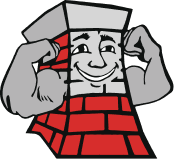Everything You Need to Know About Chimney Inspections & Why to Have One
 A chimney does more than vent smoke outside. It also protects your home from the harsh chemicals, toxic gases and high temperatures produced by the fireplace. Damage to your chimney can put your home at grave risk.
A chimney does more than vent smoke outside. It also protects your home from the harsh chemicals, toxic gases and high temperatures produced by the fireplace. Damage to your chimney can put your home at grave risk.
Even though chimneys are made of fire resistance materials, they are still affected by wear-and-tear. Metal flue liners and dampers can become warped or corrode. Tile flue liners can crack and crumble. The bricks and mortar that keep your chimney together can deteriorate. All of these problems can have serious consequences such as increased risk of carbon monoxide poisoning, greater risk of a destructive house fire, or expensive structural damage. If you don’t have your chimney regularly inspected, you could be putting yourself and your home at risk.
There are three types of fireplace and chimney inspections:
Level 1 Inspection
A level 1 chimney inspection is the type of inspection that you should schedule once a year. The purpose of this inspection is to make sure that your chimney is free of obstructions and to check for signs of wear-and-tear or damage. It is usually combined with a chimney cleaning. During a level 1 inspection, a chimney technician will:
– Visually examine the exterior and interior of your chimney for airflow problems, obstructions, leaks, and damage.
– Remove soot, creosote buildup (a flammable combustion byproduct), and any other obstructions like dead animals, animal nests, leaves, or other lawn debris.
Level 2 Inspection
A level 2 chimney inspection takes a closer look at your chimney with the use of video equipment. If a chimney technician notices signs of wear-and-tear or damage during a level 1 inspection, usually a level 2 inspection will be recommended to pinpoint the cause of the problem and access the extent of the damage.
It is smart to schedule a level 2 inspection after a chimney fire or dramatic weather event, like a heavy storm, hurricane or earthquake, to see if the chimney system has been damage. It is also recommended if you are buying or selling a home or changing your heating system (for example: installing a fireplace insert in your fireplace).
During a level 2 inspection, a chimney technician will:
– Go into the crawl space, attic or any other area where he can get a closer look at hidden parts of the chimney.
– Insert a color video camera into the chimney to survey the flue lining or interior chimney walls for signs of water intrusion, corrosion, deterioration or other types of damage. (A trustworthy chimney technician will give you a copy of the video so that you can see what he found).
Level 3 Inspection
 A level 3 chimney inspection is only recommended when there are indications of serious hidden problems that cannot be fully uncovered through a level 2 inspection. It is only recommended when there are dire concerns because the process is intrusive.
A level 3 chimney inspection is only recommended when there are indications of serious hidden problems that cannot be fully uncovered through a level 2 inspection. It is only recommended when there are dire concerns because the process is intrusive.
During a level 3 inspection, the chimney technician will either have to remove pieces of the chimney or materials in your home, like drywall, to get full access to the areas that need to be inspected. This type of inspection is the most expensive because it requires removing and restoring parts of your home.
Scheduling a level 1 chimney inspection once a year and a level 2 inspection whenever you suspect your chimney may be damaged is the best way to protect your home. Investing in regular inspections can save you thousands of dollars in the future by catching a problem early when the solution is simple—like applying a waterproofing treatment or installing a new chimney cap. It could even save your life by uncovering a safety risks that needs to be resolved before you light another fire. Our chimney technicians are here to help you. Come find out why we are the most trusted chimney service provider in Connecticut!


